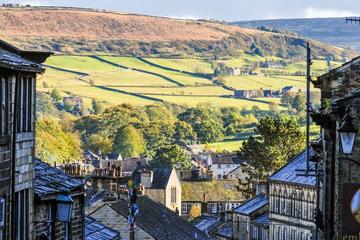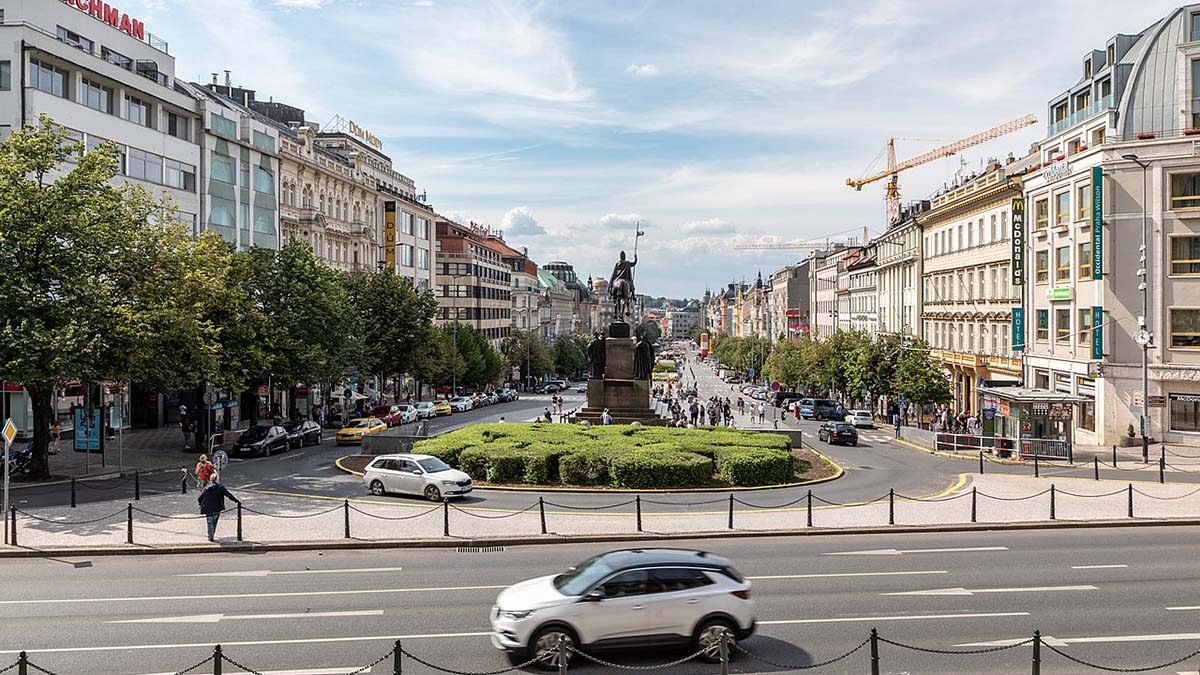
Prague, Czech Republic
by Megan Swanik
Whether you find William Shakespeare brilliant or a bore, he taught us a litany of valuable lessons. Among them is the assurance that a name should not and does not detract from the beauty (or ugliness) of an individual.
In other words: a created, inherited, or colloquially attributed name does not indicate the beauty, substance, or importance of a person. The name doesn’t reveal all; the person does.
“What’s in a name? What’s in a name? A rose by any other name would smell just as sweet.” (Romeo & Juliet, but hopefully you already knew that)
Applying Shakespeare’s wisdom on a broader scale, the same can be said of a place. A beautiful and benevolent city is just as beautiful and benevolent whether you want to call it City of Wonder or City of Doom. The substance of a location, of a city, of a street, remains steadfastly what it is by nature. It pays no mind and does not alter its feeling to meet the name bestowed upon it.
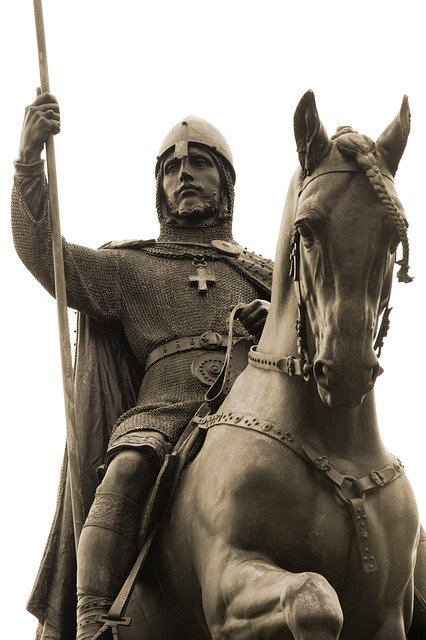 Wenceslas Square, one of the most legendary squares in Central Europe, in Prague, Czech Republic, has played host to a number of fitting names as well as false names. In tandem with the Czech people daily traversing its dark cobblestone, political subjugation in the 20th century led to cultural suppression and the great Wenceslas Square- named after a beloved Czech Saint and hero- was known momentarily by other names. Wenceslas Square (Vaclavske Namesti in Czech) was victimized by names and ideals forced upon it first by Adolf Hitler and then by Josef Stalin.
Wenceslas Square, one of the most legendary squares in Central Europe, in Prague, Czech Republic, has played host to a number of fitting names as well as false names. In tandem with the Czech people daily traversing its dark cobblestone, political subjugation in the 20th century led to cultural suppression and the great Wenceslas Square- named after a beloved Czech Saint and hero- was known momentarily by other names. Wenceslas Square (Vaclavske Namesti in Czech) was victimized by names and ideals forced upon it first by Adolf Hitler and then by Josef Stalin.
Yet though its name morphed to meet the changing political eras of 20th century Prague- the majesty and ethereal substance of the magnificent Gothic Square remained steadfastly true to its Czech identity. Wenceslas Square was known by other names. But the core of its beauty and culture remained just as sweet.
My greatest and simplest joy while living in Prague was undoubtedly the frequent walks I took, meandering aimlessly down forgotten cobblestoned streets, pausing to sit beneath the unparalleled charm of some of the best-preserved architecture in the world. When I first arrived in Prague, I felt as though somebody had stolen my daydreams of what a Gothic fairytale would look like, and turned it into a city in the Czech Republic.
As you wander down the ancient roads of Stare Mesto, passing some of the oldest synagogues and cathedrals in Europe, gargoyles and spires lurch out at you and lead you along your way. Beneath your feet sleeps an endless variation of cobblestone. Your feet feel privileged as you contemplate the feet of men like Albert Einsten, Vaclav Havel, and Franz Kafka walking for years past those very same gargoyles on that very same cobblestone. You stroll along the winding River Vltava that divides Stare Mesto and Nove Mesto (Old and New Town, respectively) from Mala Strana and Hradcany (The Lesser Quarter and The Castle District, respectively) and can’t help but spend time gawking beneath the darkened and aged Biblical Statues parading along the oldest standing bridge in Europe: Karlov Most. And above it all, resting upon its hill of antiquity and importance, sits the dark outline of the beloved Prague Castle and imposing spires of Saint Vitus’ Cathedral. It is a charming and legendary city, with an abundance of breath taking images. And Wenceslas Square is among its loveliest.
Saint Wenceslas Square reigns majestically in Nove Mesto. It stretches forward from beneath Prague Museum with the proud Saint Wenceslas statue astride his horse and rolls south to Narodny Street. The path south to Narodny is lined with shops, sausage and fried cheese stands, restaurants pouring out gulas and bars pouring out famous Czech beer.
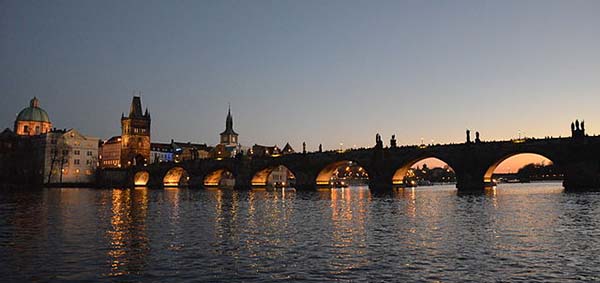
“This is the historical and political heart of our city,” crooned the quiet yet deeply Slavic accent of my Czech History Professor in Prague. “This is where our revolutions took place. This is where we declared ourselves an independent Czechoslovakia in 1918. This is where the Nazis invaded. This is where the Russians invaded. This is where we overthrew them.” In order to understand Czech culture, he lectured, you must understand the history and importance of this square.
The Czech people are, tragically, not strangers to tyranny and oppression. They shifted (with all too brief interims of democracy) from hundreds of years of rule (characterized by varying degrees of prestige and suppression) under the Hapsburgs, to the infamously terrifying and inhumane rule of the Nazis, only to overthrow them and be immediately subjected to tyranny of a different kind- Stalinist Communism. It wasn’t until 1989, when the Velvet revolution took place (In Saint Wenceslas Square!) that the Czechs and Slovaks again became a free Czechoslovakia (And then their own, amicably separated, republics in 1993).
The Czechs have admirably maintained their unique culture despite a history like theirs. They are a stubbornly proud and resilient nation. Throughout the years they have taken steps to ensure the preservation of their distinct identity. For example, in the 19th century they organized a “Czech National Revival” in which they made sure all people were able to speak and write in Czech- as opposed to the Hapsburg inherited German language. And that resilient Czech identity seeps into the stubbornly proud and resilient ancient architecture that looms above the streets, where so much human folly and destruction played out.
I imagine Saint Wenceslas Square to be like a Czech person itself. She is (for I see her as a woman-elderly and strong) as much a part of Czech history and cultural identity as any other momentous figure- like say Saint Wenceslas himself, or King Charles for whom the oldest bridge in Europe was constructed, or the famously brilliant and brave Vaclav Havel.
She remains in her long held spot in Nove Mesto- beautiful, striking, imposing, and enduring. She sat patiently while dictators rolled in with tanks and subjugated her countrymen and then eventually were defeated. She sat, bitter yet mocking for she knew their vapid tricks for what they were, as cruel men such as Hitler and Stalin took ownership of her beauty and attributed their names to the square. For decades, in fact for the greater part of the Twentieth Century, she bore imposter names paying tribute to imposter rulers. (If you visit the Museum of Communism a few short steps from the end of her street you can still see the mocking and decaying signs that were hung during Communist ruling bearing the name of Stalin. )
I see her as mocking and wise because although she bore these names so unkindly forced upon her, she knew that a name means nothing. Her name became German and then it became Russian. But Wenceslas Square remained steadfastly Czech. It was and is defiantly unique and striking- the darkly aged colors and foreboding architecture of the Gothic Square stand firm and enduring. As does Czech culture. As does all of Prague.
As does anything or being that knows a name and title is little more than folly and semantics. Real beauty, real anything, runs much deeper than a word momentarily attributed to the surface.
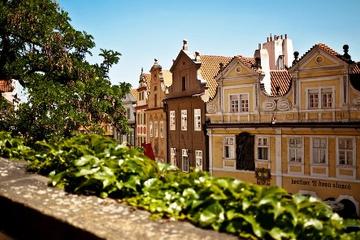
Private Walking Tour: Prague Old Town, Wenceslas Square and Jewish Quarter
If You Go:
The Czech Republic is easy to reach by train, bus, or air. It is most commonly visited via Germany, which borders the Czech nation to the West. Trains from Berlin or Munich average about eighty dollars and reach Prague in about five hours. Tourism is quite rampant and accessible in Prague. Finding a hostel, hotel, or rental apartment is easy to find via any of the usual accommodation portals like tripadvisor.com, hostelbookers.com, and hostelworld.com. It should be noted that Prague gets quite cold in the winter months, but probably the most magical time to visit the city is in December when it is covered in Christmas markets. An alternative to the Christmas Markets would be the Easter Markets, but this is when the Czech tourist season is at its peak.
About the author:
Megan Swanik is a freelance writer and blogger currently based in Southeast Asia. She’s been to more than twenty countries in the past five years and has lived in Southeast Asia for the last two. You can follow her adventures on her blog at www.nomadicmegan.com
Photo credits:
Wenceslas Square by Dietmar Rabich / Wikimedia Commons / /
Saint Wenceslas statue by PublicDomainPictures from Pixabay
Karlův most – Charles Bridge by Nice0205 / CC BY-SA

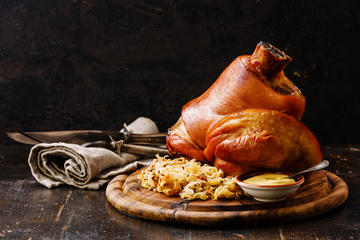
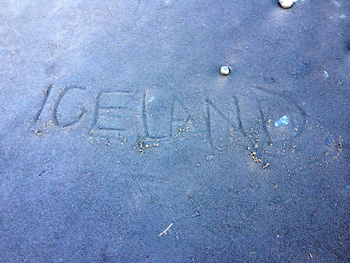
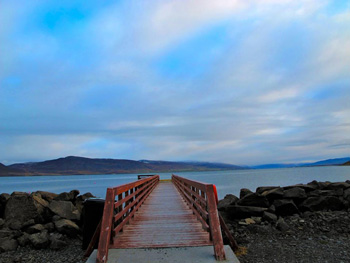 I am writing this brief tour of the Icelandic Poetry Tradition from a loft in New York, where I am being visited by a poet I met in Iceland, HEK. He is also a musician, and was just signed yesterday. Not bad for five days in New York. The assessment of the current poetry scene in Iceland comes from HEK. The summary of the tradition comes from careful Googling.
I am writing this brief tour of the Icelandic Poetry Tradition from a loft in New York, where I am being visited by a poet I met in Iceland, HEK. He is also a musician, and was just signed yesterday. Not bad for five days in New York. The assessment of the current poetry scene in Iceland comes from HEK. The summary of the tradition comes from careful Googling. Icelandic Skaldic poetry tradition was written by skalds, which referred to Icelandic poets. Skaldic poetry was sung to honor nobles and kings, and to recall historic events or battles. Many are satirical and witty, using employing quirky language and humor. These poems are known for their complexity. Each has eight lines, each with six syllables and the lines are rhymed utilizing, alliteration, half rhyme and full rhyme.
Icelandic Skaldic poetry tradition was written by skalds, which referred to Icelandic poets. Skaldic poetry was sung to honor nobles and kings, and to recall historic events or battles. Many are satirical and witty, using employing quirky language and humor. These poems are known for their complexity. Each has eight lines, each with six syllables and the lines are rhymed utilizing, alliteration, half rhyme and full rhyme. Before Skaldic poetry there was the Eddas, which is an Old Norse word that means great-grandmother. These were written in the 10th century and are a collection of poems of Norse mythology and legends.
Before Skaldic poetry there was the Eddas, which is an Old Norse word that means great-grandmother. These were written in the 10th century and are a collection of poems of Norse mythology and legends.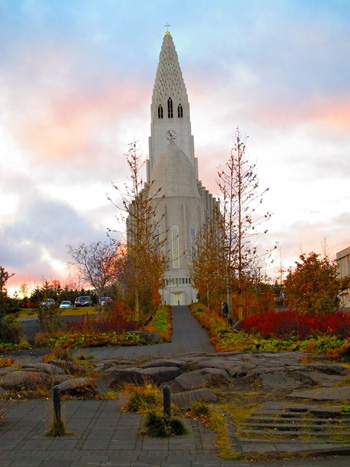 But in the 19th Century the romanticism that was invading the world arrived in Iceland and poetry returned in full force to the elf swept lands. The tradition in this period developed from the Old Icelandic Poetry before it. These poems utilized alliteration, steadfast rhythm, and a coherent length of line and stanza. Imagery comes from old mythology and medieval literature.
But in the 19th Century the romanticism that was invading the world arrived in Iceland and poetry returned in full force to the elf swept lands. The tradition in this period developed from the Old Icelandic Poetry before it. These poems utilized alliteration, steadfast rhythm, and a coherent length of line and stanza. Imagery comes from old mythology and medieval literature.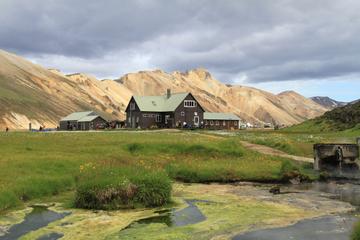

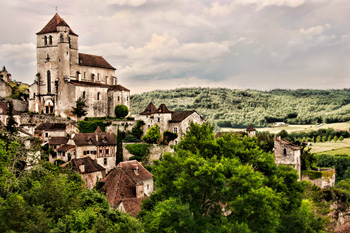
 On the climb to the entrance of Font-de-Gaume, we are told Cro-Magnon man was not so different from us. If he was in a suit and got on a bus today, you would not think twice about it, the guide delightedly relays. In the cave, one of the last in France with polychrome paintings still open to the public, the guide constantly reminds us to not touch the walls or brush against the paintings. Many have deteriorated with age and some are marred by graffiti. It’s dark and damp but when the lights shine on a frieze, there are audible gasps of appreciation at the vitality, colours, and exactness of scale of the animals. Some outlines are engraved while others make use of the rocks’ curvatures to give depth. Bison, reindeer, mammoths, and little black-brown horses are mixed with a variety of undeciphered symbols. Some figures are static and others portray motion quite effectively. A favourite scene features a long-antlered reindeer licking the head of another kneeling opposite in a moving display of tenderness. After leaving the darkness of Font-de-Gaume, we meander northwards along the Vézère River to Lascaux II, a cave near Montignac.
On the climb to the entrance of Font-de-Gaume, we are told Cro-Magnon man was not so different from us. If he was in a suit and got on a bus today, you would not think twice about it, the guide delightedly relays. In the cave, one of the last in France with polychrome paintings still open to the public, the guide constantly reminds us to not touch the walls or brush against the paintings. Many have deteriorated with age and some are marred by graffiti. It’s dark and damp but when the lights shine on a frieze, there are audible gasps of appreciation at the vitality, colours, and exactness of scale of the animals. Some outlines are engraved while others make use of the rocks’ curvatures to give depth. Bison, reindeer, mammoths, and little black-brown horses are mixed with a variety of undeciphered symbols. Some figures are static and others portray motion quite effectively. A favourite scene features a long-antlered reindeer licking the head of another kneeling opposite in a moving display of tenderness. After leaving the darkness of Font-de-Gaume, we meander northwards along the Vézère River to Lascaux II, a cave near Montignac. Grotte de Lascaux’s streams of ochre and black bison careening over its walls are the classics of cave paintings. They are the earliest known examples of representational art at a mind-boggling 17,000 years old. Access to the originals is highly restricted as the cave was closed to the public in 1963 to protect the paintings from further deterioration caused by visitors’ body heat and breathing. The French government built Lascaux II nearby, a precise centimetre-by-centimetre replication of two galleries of the original cave. The public can again browse the tableaux detailing the story of a hunt. In some places, entire sections of the walls and ceiling are teeming with stampedes of stags, horses, ibexes, and long horned bulls. As stunning as the display is, it is difficult to forget we are not in the original and the visit feels somewhat stilted. I want another “real” cave to visit.
Grotte de Lascaux’s streams of ochre and black bison careening over its walls are the classics of cave paintings. They are the earliest known examples of representational art at a mind-boggling 17,000 years old. Access to the originals is highly restricted as the cave was closed to the public in 1963 to protect the paintings from further deterioration caused by visitors’ body heat and breathing. The French government built Lascaux II nearby, a precise centimetre-by-centimetre replication of two galleries of the original cave. The public can again browse the tableaux detailing the story of a hunt. In some places, entire sections of the walls and ceiling are teeming with stampedes of stags, horses, ibexes, and long horned bulls. As stunning as the display is, it is difficult to forget we are not in the original and the visit feels somewhat stilted. I want another “real” cave to visit. We head for Grotte du Pech-Merle by the Lot River. Photo 2 On our way south, we pass through towns perched precipitously on hilltops; golden-stoned Turenne and the pilgrimage destination of Rocomadour. Photo 3 & 4 The region is known for truffles and foie gras so food is elevated, as only the French can, to almost impossible culinary standards. Even small country restaurant menus have one or both of those luxurious ingredients prominently featured. Did our prehistoric relatives hunt for truffles to garnish their bison?
We head for Grotte du Pech-Merle by the Lot River. Photo 2 On our way south, we pass through towns perched precipitously on hilltops; golden-stoned Turenne and the pilgrimage destination of Rocomadour. Photo 3 & 4 The region is known for truffles and foie gras so food is elevated, as only the French can, to almost impossible culinary standards. Even small country restaurant menus have one or both of those luxurious ingredients prominently featured. Did our prehistoric relatives hunt for truffles to garnish their bison?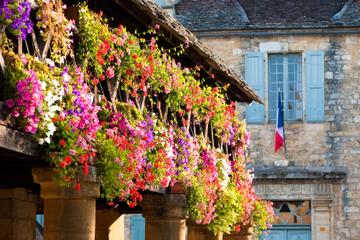
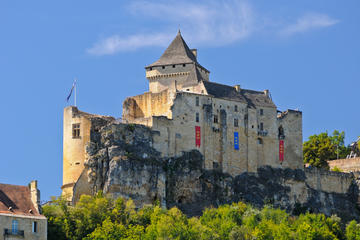


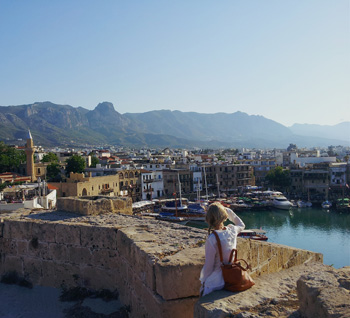 I believe the title of that conference couldn’t have been more appropriate and topical. The island of Cyprus is divided into two parts, despite the international community does not approve this division. The north has been occupied by the Turkish army in the Seventies, and since then there is a government that totally depends on Ankara.
I believe the title of that conference couldn’t have been more appropriate and topical. The island of Cyprus is divided into two parts, despite the international community does not approve this division. The north has been occupied by the Turkish army in the Seventies, and since then there is a government that totally depends on Ankara.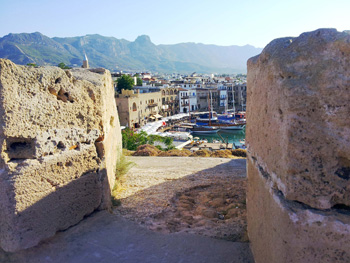 Later on, the south of the island gained its independence but Turkey never gave up the northern territories despite the international community condemned the occupation. That’s why no international flights are scheduled to Northern Cyprus (complete name: Turkish Republic of Northern Cyprus) and Ercan Airport is not listed in any official document that regulates the international air traffic. All the flights to Ercan originate from Turkey and, according to the international law, they technically invade the air space of a sovereign country (the Republic of Cyprus, member of the European Union) and land there illegally.
Later on, the south of the island gained its independence but Turkey never gave up the northern territories despite the international community condemned the occupation. That’s why no international flights are scheduled to Northern Cyprus (complete name: Turkish Republic of Northern Cyprus) and Ercan Airport is not listed in any official document that regulates the international air traffic. All the flights to Ercan originate from Turkey and, according to the international law, they technically invade the air space of a sovereign country (the Republic of Cyprus, member of the European Union) and land there illegally.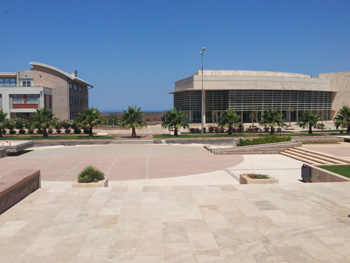 Early in the morning I walk from the guesthouse to the conference center. At eight o’clock it is already warm and the valley which extends beneath the campus towards the south seemed a strip of desert painted in watercolors that gently merged with the Troodos mountains. To the west, the deep blue of the Mediterranean Sea pops up from a remarkable distance. The sunbeams reflected by its surface must have looked exactly the same way 10.000 years earlier when human settlements were already spread throughout the island, making it one of the oldest signs of civilization.
Early in the morning I walk from the guesthouse to the conference center. At eight o’clock it is already warm and the valley which extends beneath the campus towards the south seemed a strip of desert painted in watercolors that gently merged with the Troodos mountains. To the west, the deep blue of the Mediterranean Sea pops up from a remarkable distance. The sunbeams reflected by its surface must have looked exactly the same way 10.000 years earlier when human settlements were already spread throughout the island, making it one of the oldest signs of civilization.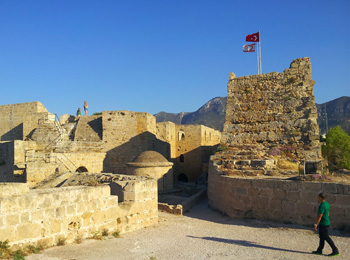 Kyrenia is probably the Cypriot town that better shows this extraordinary heritage at once. On the initial slope of the mountains located right on its back, an imposing Gothic structure known as Bellapais Abbey offers a 3 miles view over an unexpectedly luxuriant vegetation, white villas and turquoise sea. Bellapais is also famous because it’s linked to the British novelist Lawrence Durrell, who lived in that village for some years while he wrote an autobiographical work titled Bitter Lemons of Cyprus.
Kyrenia is probably the Cypriot town that better shows this extraordinary heritage at once. On the initial slope of the mountains located right on its back, an imposing Gothic structure known as Bellapais Abbey offers a 3 miles view over an unexpectedly luxuriant vegetation, white villas and turquoise sea. Bellapais is also famous because it’s linked to the British novelist Lawrence Durrell, who lived in that village for some years while he wrote an autobiographical work titled Bitter Lemons of Cyprus. The inner courtyard of Kyrenia castle is vast and adorned by blossoming plants and palm trees, which grow at the margin of a dusty field. Somewhere, in a privileged position, it is possible to spot two imposing loggias with lancet arch from which the king and the queen used to watch the games organized on this big open space. The first level of the castle hosts the living quarters, a shipwreck museum and some amazing rooms that offer an authentic medieval atmosphere. Finally, from the circular bastion on the upper level it is possible to admire the picturesque harbor, usually full of ships docked next to the terraces of many bars and restaurants. It’s a lively image of people and colors, hectic tourists walking back and forth or lazy patrons sprawled on wicker chairs sipping cocktails in the mid-afternoon.
The inner courtyard of Kyrenia castle is vast and adorned by blossoming plants and palm trees, which grow at the margin of a dusty field. Somewhere, in a privileged position, it is possible to spot two imposing loggias with lancet arch from which the king and the queen used to watch the games organized on this big open space. The first level of the castle hosts the living quarters, a shipwreck museum and some amazing rooms that offer an authentic medieval atmosphere. Finally, from the circular bastion on the upper level it is possible to admire the picturesque harbor, usually full of ships docked next to the terraces of many bars and restaurants. It’s a lively image of people and colors, hectic tourists walking back and forth or lazy patrons sprawled on wicker chairs sipping cocktails in the mid-afternoon.
 Once the conference was over, it was time for me to fly back home. The taxi drove along the motorway through the countryside. The dominant color was due to the yellowish vegetation; the light outside was blinding even despite the tinted glasses of the car. I passed the security check and boarded. The plane took off and climbed out of Ercan’s runway. I tried to spot from that height the campus, the castle and olive groves but something else caught my attention instead: a pair of giant flags drawn on the mountains. The drawings depicted the Turkish flag on the left and, next to it, a rectangle with reversed colors that has been adopted by the Northern Cyprus as their national symbol. A motto accompanied the flags: Ne mutlu Türküm diyene (“How happy is the one who says I am Turkish”).
Once the conference was over, it was time for me to fly back home. The taxi drove along the motorway through the countryside. The dominant color was due to the yellowish vegetation; the light outside was blinding even despite the tinted glasses of the car. I passed the security check and boarded. The plane took off and climbed out of Ercan’s runway. I tried to spot from that height the campus, the castle and olive groves but something else caught my attention instead: a pair of giant flags drawn on the mountains. The drawings depicted the Turkish flag on the left and, next to it, a rectangle with reversed colors that has been adopted by the Northern Cyprus as their national symbol. A motto accompanied the flags: Ne mutlu Türküm diyene (“How happy is the one who says I am Turkish”).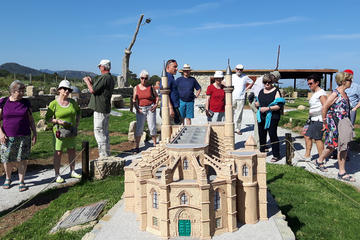
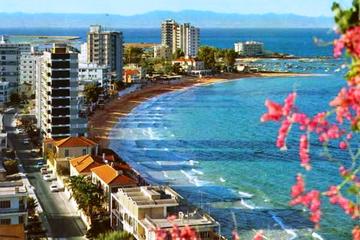

 The Tour will start near Leeds Town Hall, built between 1853-1858 to the design of the Paris-trained Hull-born architect Cuthbert Broderick. The 225-feet high building was the tallest in Leeds for nearly a century. It was opened by Queen Victoria, and copied across Britain and the British Empire.
The Tour will start near Leeds Town Hall, built between 1853-1858 to the design of the Paris-trained Hull-born architect Cuthbert Broderick. The 225-feet high building was the tallest in Leeds for nearly a century. It was opened by Queen Victoria, and copied across Britain and the British Empire.
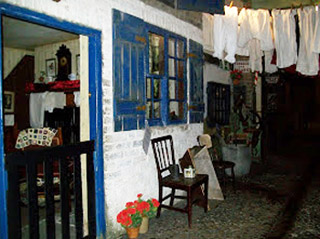 The museum is housed in the old Mechanics’ Institute, which was also designed by Broderick. The City Museum dates from 1821, but moved and closed several times, before reopening in its current home in 2008. It has free entrance.
The museum is housed in the old Mechanics’ Institute, which was also designed by Broderick. The City Museum dates from 1821, but moved and closed several times, before reopening in its current home in 2008. It has free entrance.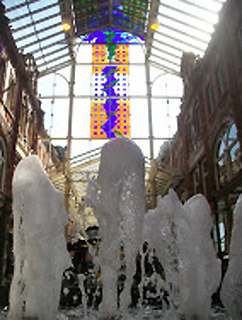 Returning to the city centre, the Corn Exchange is another Broderick-designed building. It is one of only three Victorian corn exchanges still being used for retail, with stylish shops and restaurants now trading under the oval glass roof.
Returning to the city centre, the Corn Exchange is another Broderick-designed building. It is one of only three Victorian corn exchanges still being used for retail, with stylish shops and restaurants now trading under the oval glass roof.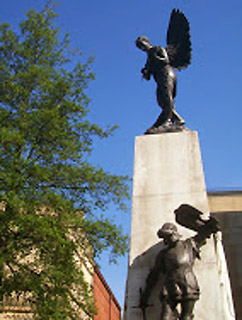 Leeds races fundraising in honour of Jane Tomlinson usually pass down Briggate. Her athletic achievements and fundraising efforts while battling cancer between 2000 and 2006 raised the profile of Leeds endurance events, and along with several Leeds and Yorkshire medallists at London 2012, helped bring the Tour de France to Leeds. Leeds is also home to the Yorkshire cricket team, with the English and Welsh league formatted around counties. Yorkshire has won the most county championships in the league’s history. The last was in 2001.
Leeds races fundraising in honour of Jane Tomlinson usually pass down Briggate. Her athletic achievements and fundraising efforts while battling cancer between 2000 and 2006 raised the profile of Leeds endurance events, and along with several Leeds and Yorkshire medallists at London 2012, helped bring the Tour de France to Leeds. Leeds is also home to the Yorkshire cricket team, with the English and Welsh league formatted around counties. Yorkshire has won the most county championships in the league’s history. The last was in 2001.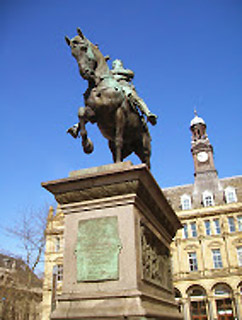 There is now a Brownlee triathlon in support of Macmillan cancer support at Harewood House, and this is an example of how nature and sport go hand in hand together in Leeds and Yorkshire.
There is now a Brownlee triathlon in support of Macmillan cancer support at Harewood House, and this is an example of how nature and sport go hand in hand together in Leeds and Yorkshire.